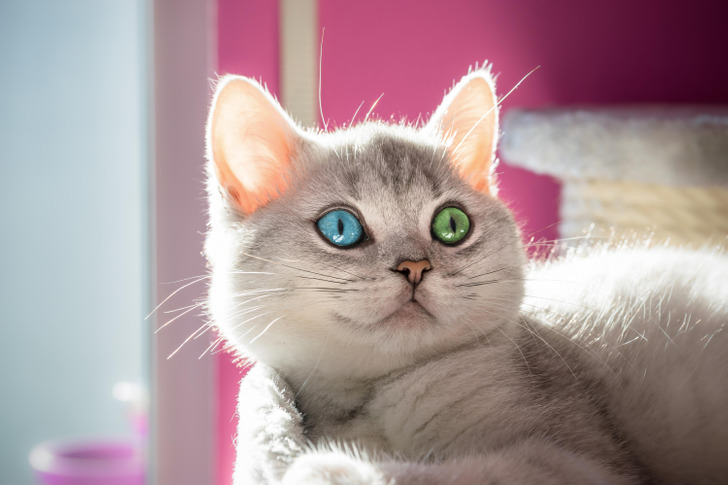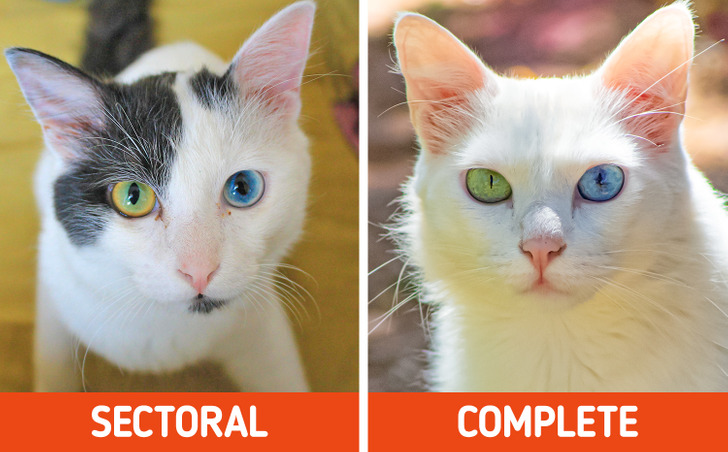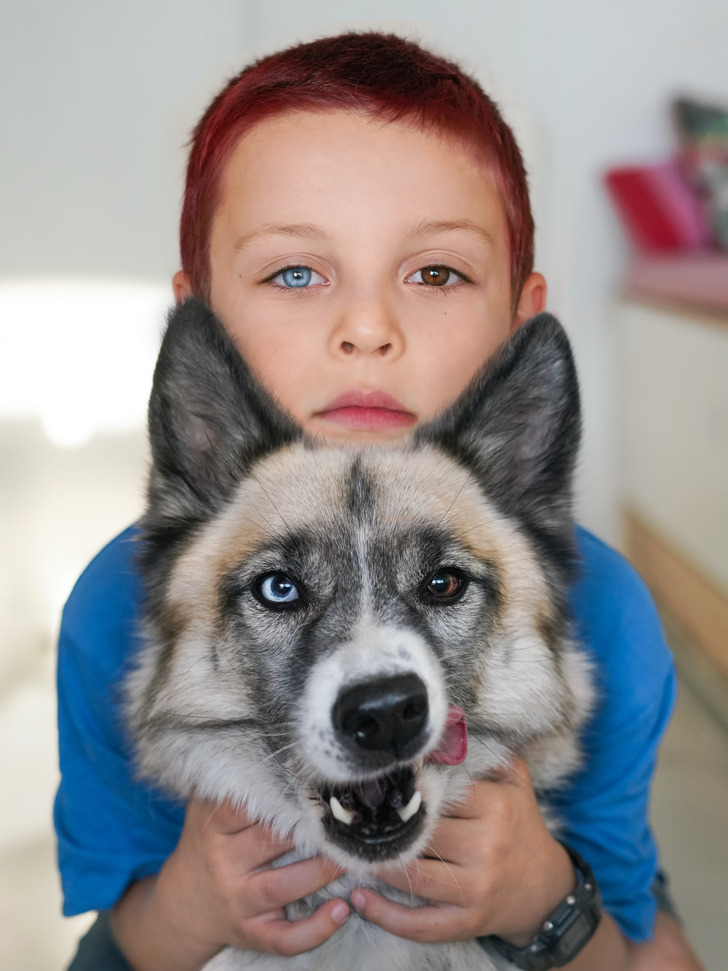The Reason Why Cats Can Have 2 Different Color Eyes
Occasionally we come across cats who have different color eyes. This is an inborn feature that is called heterochromia. It can be sectoral or complete.
5-Minute Crafts wants to tell you why cats sometimes have eyes that are different colors and what heterochromia is all about.
What heterochromia is
Heterochromia is a variation in coloration. Most often this term is used to describe color differences in the iris, but it can also be applied to hair or skin color variations.
Eye color, especially the color of the iris, is determined by the concentration and distribution of melanin. There are only 2 pigments in the irises of mammals — eumelanin and pheomelanin. The overall concentration of these pigments, the ratio between them, the variations in the distribution of the pigment in the stroma layers of the iris, and the effects of light scattering play an important role in determining eye color.
The main cause of heterochromia is a lack of genetic diversity, at least in domestic animals. This is due to a mutation in the genes that are responsible for the distribution of melanin. Usually, they are damaged because of the homogeneity of the chromosomes. For example, heterogeneous eye color occurs in 2 cases in cats:
- When there is a dominant white gene in the genome of an animal, it disguises any other color genes and makes the cat completely white. These are, for example, Turkish Van, Turkish Angora, Persian, and Khao Manee.
- When there is the white spotting gene in the genome, responsible for the bicolor and black and white color. This gene prevents the melanin pigment from entering one eye during fetal development, resulting in a cat having one blue eye and one green, yellow, or brown eye. For instance, this coloration can be seen in Turkish Van, Sphynx, and Japanese Bobtail cats.
Types of heterochromia
There are 2 types of heterochromia:
- Complete — the iris of one eye is completely different from the other.
- Sectoral — when a part of one iris is different in color from the rest of the iris and its center. In these cases, we can see a ring or “spikes” of different colors coming from the pupil.
At the same time, heterochromia in cats doesn’t appear right away. Like some other newborn mammals, all kittens have blue eyes, which can change as they mature. The differences in the eye color of an odd-eyed kitten might be unnoticeable until you examine them closely — in odd-eyed kittens, each eye has a different shade of blue. The color of one eye remains the same, while the other changes over the course of several months — for example, from blue to green or yellow, or from green to blue or yellow.
Who else can have heterochromia?
Apart from cats, heterochromia is common in some dog breeds, cattle, and horses. Humans can also have heterochromia but it’s rare. For example, the actor Henry Cavill has sectoral heterochromia and actress Kate Bosworth has complete heterochromia.
Among dogs, complete heterochromia can be found in the Siberian Husky and some other breeds like
Australian Shepherds, Catahoula Curs, and sometimes Shih Tzus. In horses, complete heterochromia is most often found in animals with pinto coloring. In these cases, they normally have one brown and one white, gray, or blue eye.
Sectoral heterochromia can often be found in dogs, especially in ones with merle coats. These are the Australian Shepherd, Border Collie, Collie, Shetland Sheepdog, Welsh Corgi, Pyrenean Shepherd, Mudi, Beauceron, Catahoula Cur, Dunker, Great Dane, Dachshund, and Chihuahua, sometimes including the Siberian Husky and Shih Tzu.


